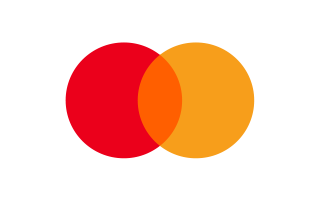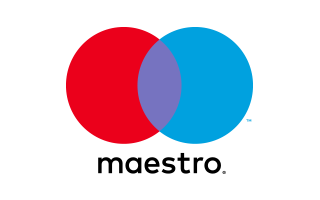Once you start learning photography, one of the first things you will learn is photography formats. You will also realize that professionals emphasize shooting in RAW format. However, you must understand what is RAW in photography and why you should shoot in RAW. In this article, you will distinguish between RAW and JPEG photo file format. Let's dive right into it:
What is Raw in Photography?
When you use a digital camera or smartphone to take a photo, the Camera compresses your images immediately and saves them in a JPEG file format. Well, when shooting in RAW, the Camera captures all the details as they are. This time, the camera saves the photo in RAW file format. This is an unprocessed photo file format that allows you to edit without compromising its quality.
Most modern digital cameras can shoot in RAW format. Some of the latest smartphone cameras can also capture RAW images. However, you must understand that by default, your camera settings make quick edits before saving it in JPEG, the standard format. For the record, JPEG means Joint Photographic Experts Group.
A JPEG file will open on any digital device and computer. On the other hand, to open RAW file formats, you will need special software depending on the type of your Camera.
There are several file formats in photography, including PNG and TIF. However, the most common formats used by photographers around the world are JPEG and RAW formats.
Now that you know what is RAW in photography, why should you use it? Why do most professional photographers advise that you use RAW over JPEG photo format? Well, there are various reasons why you would choose RAW photo formats.
Below, we are going to compare RAW and JPEG photo formats.
Comparison between RAW and JPEG photo formats
Being the most common photo file formats, RAW and JPEG are entirely different. Not that one is better than the other.
Consider the following factors before choosing a photo format:
1. How urgently do you need the photos
2. The photo quality you need
3. Use of the photo
4. Lighting conditions
5. Type of your Camera

How urgently do you need the photos?
If you are looking to take quick bursts, RAW may not be the ideal format for you. Besides taking long to take a shot, you must also edit a RAW file before submitting it. As mentioned early, you may not be able to open it on all devices. JPEG is ideal for a quick burst and instant photography.
Your desired photo quality
While JPEG is the most popular photo format, it does not offer the highest quality. It is because your Camera compresses the photo before saving it to the SD card. During this process, the image loses some quality and details.
RAW images offer the freedom to edit and adjust your photos as you please. Using photo editing apps such as Photoshop, you can enhance RAW photos without losing the quality. If you are looking for excellent quality shots, I suggest you shoot in RAW.
Besides, editing JPEG images leads to a significant loss of image quality.
Use of the photo
How do you intend to use your shots? While RAW photo format offers excellent quality and control, you may not use this format for web images. You might need to edit your website images and save them in JPEG format.
JPEG images are lighter and most preferred for websites and social media. Another advantage of the JPEG images is that they take less space than the RAW file format.
Lighting conditions
The lighting conditions should dictate the photo format you use. For instance, if you are going to shoot outdoors when the sun is up high, use the RAW file format. This way, you can always adjust brightness and exposure later when processing the photos.
With RAW file format, you can always adjust the images to your preferred quality. If you are having difficulties with lighting conditions or shooting shiny subjects, always go for the RAW format. The same goes for nighttime photography.
Avoid JPEG format in this case. Enhancing exposure can result in a low-quality image.
The type of your Camera
Most digital cameras support both RAW and JPEG file formats. However, only some of the modern smartphone cameras lack RAW camera options.
Note that different cameras may have different file names. For instance, Canon raw images have a .CR2 while Nikon uses .NEF filename extensions.
Also, if you plan on shooting RAW images, ensure you have enough storage. RAW files are heavier and may take up to 4 times the storage space as a JPEG image.
Well then, the above-outlined factors should help you to determine when to use RAW or JPEG format. However, it all comes back to what you need from your photography.
Why should you shoot in RAW?
Professionals suggest that you should shoot in RAW owing to the file format benefits. Quality is among the most significant aspects of photography. If you have not been shooting in RAW, here is a list of the reasons why you should start now:
Top 6 reasons why you should start shooting in RAW
The RAW format gives you full control of your images
With RAW image files, you can always edit them to your preference. Using photo editing software like Adobe Lightroom, you can adjust the brightness, exposure, and saturation without losing the photo's quality.
You could still edit a JPEG image. However, this leads to low-quality images, hence JPEG's pet name lossy compression.
Provides a Greater Dynamic Range
The RAW file format offers intense details with each shot. These images are uncompressed and unedited, unlike JPEG files. It gives you multiple options to edit your photos to tell your story.
You can showcase different details on the same photo using different editing styles. It is easy to edit and recover fine details from a RAW file, such as shadows from an overexposed image.
Offers non-destructive editing
One major concern among photographers is losing original works. Unfortunately, when working with most image formats, we tend to save over images after editing, losing the original photo. The RAW photo format allows you to edit your image, save, reset, and still have your original photo.
Perfect choice for portraits and large printing
When shooting portrait photography, use the RAW file format. RAW photo printings are of higher quality than JPEG. This file format does not cause color banding on your large prints.
You can adjust the white balance with RAW images
Proper lighting is necessary for high-quality photography. However, it is not every day that you will have the perfect lighting for your shoot. Sometimes the sun shines bright, and other days you will be out shooting on a cloudy day.
When you shoot in RAW, you will not have to worry about the white balance adjustment, unlike in JPEG format. Editing tools will allow you to adjust the white balance in RAW format and maintain high quality.
Offers the best quality your Camera can offer
Clients are often looking for high-quality work. Most of them won't pay for low quality or poorly edited photography. Always remember this when going out for a shoot. Well, if you are looking to mesmerize your clients, the RAW image quality will do. Of course, you must put in some editing skills to perfect your work.
What is the downside of shooting in RAW?
Well, we have been talking about how awesome RAW in photography is but must you use this format for excellent quality? The answer is no. Not all RAW images provide details or grade, as stated above.
What is the downside of shooting in RAW?
RAW in photography is incredible, but far from perfect. Below are the disadvantages of shooting in RAW;
You need time and skill to edit photos
If you are looking for some quick photos, shooting in RAW will inconvenience you. Once you finish shooting your photos, you must spend some time editing and adjusting the images. Well, you must possess photo editing skills to use RAW image files.
You cannot share these images directly, as they may not open on other devices. While professional photographers value quality, time is of the essence.
Not suitable for web images
If you plan on using your photography on your website, the RAW format is not always the best option. Web images are best if shot in JPEG. However, if you have the photo editing skills, you may still edit RAW photos before uploading them to the web.
Web images need to be lighter in terms of image size, which makes JPEG shots appropriate. These are about 4 times smaller than RAW images.
Raw images may slow your Camera down
While High-End cameras may write RAW images faster, regular digital cameras may not. Thus, it takes a moment for your Camera to write a single RAW photo. This means that you may not be able to shoot a sequence of frames.
It also makes it challenging to shoot images with a moving subject. The JPEG images are smaller and thus take less time to write in the memory card.
You might shoot in RAW on a busy schedule. It will only increase your workload while slowing you down at the same time.
It needs more storage space on the memory card
Whenever you go out intending to get RAW shots, always carry an extra memory card. As indicated severally in this article, RAW images are more extensive than most formats. This takes us back to the above point; RAW images may slow your Camera.
You need specific software to view your work
You can view your RAW images from your Camera's LCD screen. However, you may not open these files on your PC unless you have the specific software supporting RAW images shot with your Camera.
Otherwise, use editing software to edit and save in JPEG or PNG formats. This is the only way you can open or distribute your images.
Conclusion
Modern photographers adore working with RAW images. They provide room for editing images to perfection. Now, you understand RAW in photography and the reasons why you should shoot in RAW. However, as mentioned above, you must have photo editing to produce high-quality images from RAW files. Weigh your options before setting your camera to shoot in RAW.

















